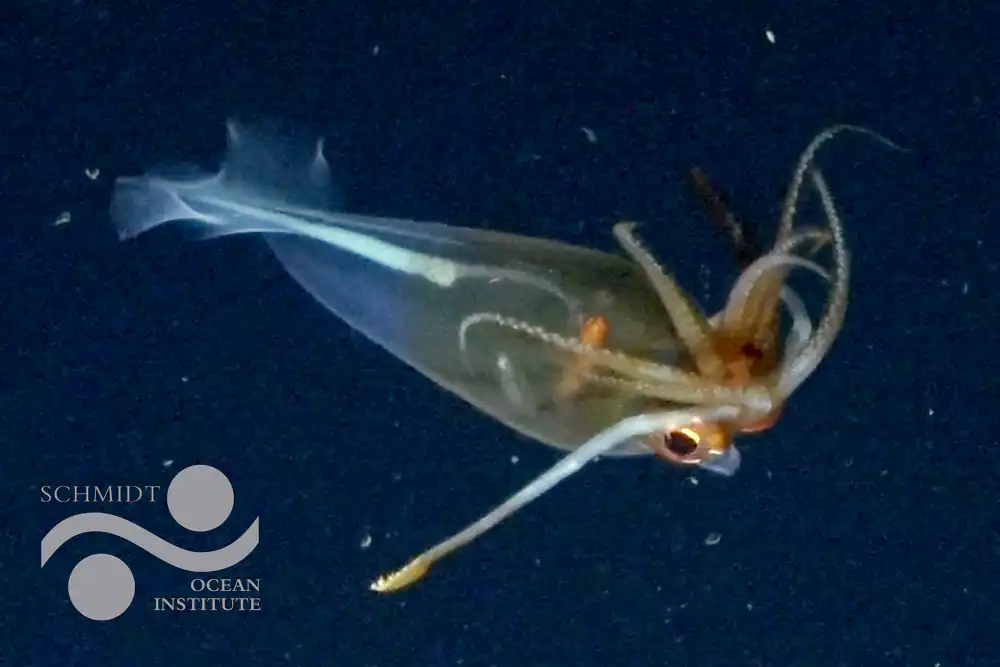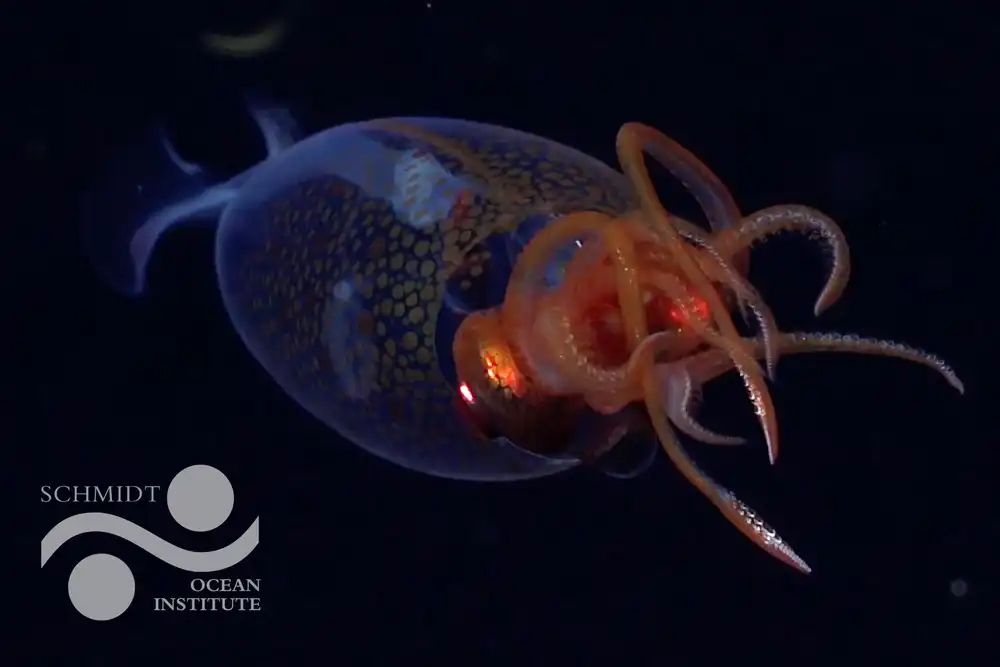
By DIVE Staff
The first ever footage of a colossal squid (Mesonychoteuthis hamiltoni) in its natural environment has been filmed by scientists from Schmidt Ocean Institute 100 years after the species was first described – and it’s of a baby.
Living up to its name somewhat, the colossal baby measured 30cm in length – about the same sort of size, if not larger, than your average reef squid.
Colossal squid are members of the Cranchiidae family known as glass squid (sometimes called cockatoo squid) for their transparent bodies, although M. hamiltoni loses its transparency as it matures.
They are the largest invertebrates on the planet by mass, reaching nearly half a metric tonne in weight, and have the largest eyes known to science.
Measuring between 6-10m in overall length, colossal squid are shorter than giant squid (Architeuthis dux), which have been recorded at 12-13m in length, but their mantles (the main body) are much bulkier at up to 4m in length, twice the size of the giant squid, the length of which is mostly made tentacles.
The first specimen of colossal squid was described in 1925, based on remains found in the stomach of a sperm whale. It has been sighted only rarely since, and most sightings were of dead animals; the first living example was caught off South Georgia Island in 2005, and it has never been recorded in the depths.
‘It’s exciting to see the first in situ footage of a juvenile colossal and humbling to think that they have no idea that humans exist,’ said Dr Kat Bolstad of the Auckland University of Technology, one of the independent scientific experts the team consulted to verify the footage.
‘For 100 years, we have mainly encountered them as prey remains in whale and seabird stomachs and as predators of harvested toothfish.’
The footage was recorded on 9 March by Schmidt Ocean Institute’s ROV SuBastian at a depth of 600 metres (1968.5 ft), during a dive from the Institute’s research vessel Falkor (too) near the South Sandwich Islands in the South Atlantic Ocean.
The expedition during which the baby squid was recorded was part of the Nippon Foundation-Nekton Ocean Census, a collaborative global effort to accelerate species discovery, and it was the team’s second significant find this year.
During the Institute’s previous expedition in January, the Falkor (too) team filmed the first confirmed footage of the glacial glass squid (Galiteuthis glacialis) in the Southern Ocean near Antarctica, another species of glass squid that has never been seen alive in its natural environment before.

Glacial squid reach only around 50cm in length, but their transparent bodies closely resemble those of the juvenile colossal squid. The two can be distinguished by the presence of hooks on the middle of the colossal squid’s eight arms.
‘The first sighting of two different squids on back-to-back expeditions is remarkable and shows how little we have seen of the magnificent inhabitants of the Southern Ocean,’ said Schmidt Ocean Institute’s executive director, Dr. Jyotika Virmani.
‘Fortunately, we caught enough high-resolution imagery of these creatures to allow the global experts, who were not on the vessel, to identify both species.
‘These unforgettable moments continue to remind us that the Ocean is brimming with mysteries yet to be solved.’
The Schmidt Ocean Institute’s ROV SuBastian has now captured the first confirmed footage of at least four squid species in the wild, including the Ram’s Horn Squid (Spirula spirula) in 2020 and the Promachoteuthis in during an expedition to the Nazca Ridge of the southeastern Pacific in September 2024.
The post First ever footage of a baby colossal squid appeared first on DIVE Magazine.







